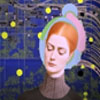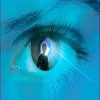Mass Dreams Of The Future ~ Part II
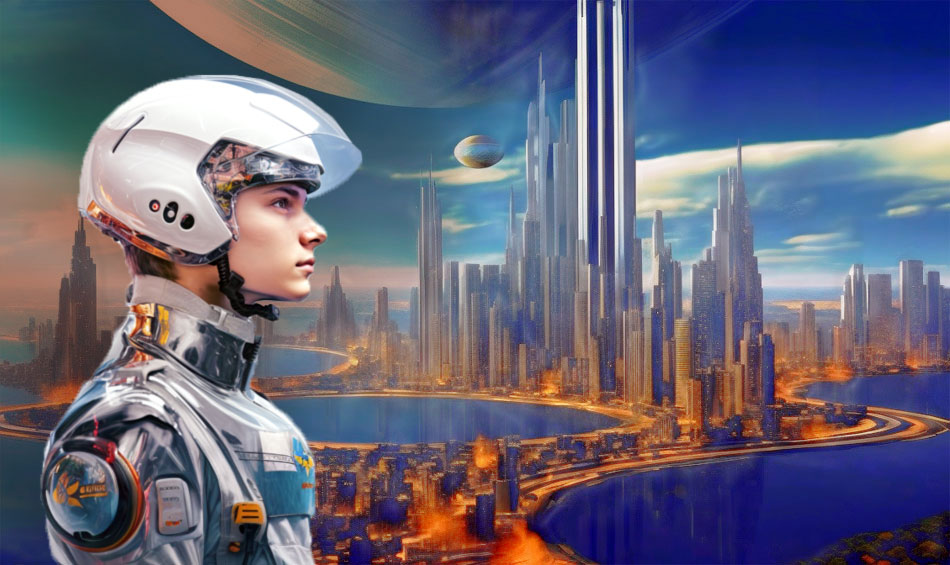 by Chet Snow
by Chet Snow
Between 1981 and 1984, Drs. Wambach and Snow, along with Dr. R. Leo Sprinkle of the University of Wyoming, offered over 2,500 Americans an opportunity to “progress” hypnotically to a future lifetime, in about either 2100 or 2300 A.D.
After gathering data and comparing notes, they discovered that the future-life progressions fell into four categories. These were:
(I) “In-space” habitats off of the Earth’s surface, either in space stations, spaceships or in experimental colonies on other planets;
(II) seemingly New Age communities on Earth, usually in the mountains or near the ocean shore;
(III) “Hi-tech” urbanites, mostly living in artificially enclosed or underground cities; and
(IV) “rural survivors” in nineteenth-century-style villages along with six “urban survivors” living in the rubble of once-great cities.
 Mass Dreams of 2100-2200 A.D. – Hi-tech Cities and Rural Survivors
Mass Dreams of 2100-2200 A.D. – Hi-tech Cities and Rural Survivors
Type III and IV Reports
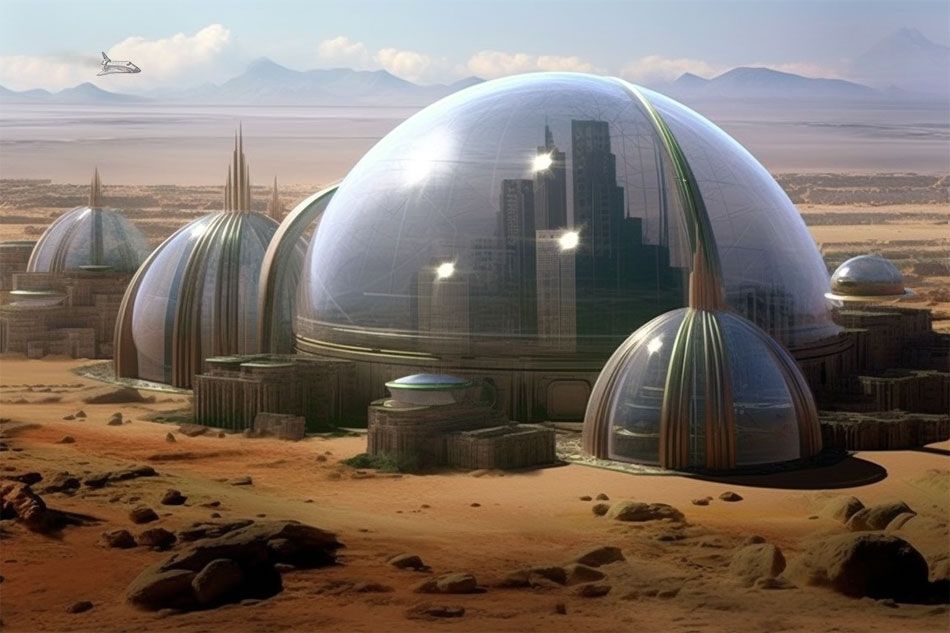 Type III – Hi-tech Cities
Type III – Hi-tech Cities
Type III, or “Hi-tech,” apparently represents the simultaneous triumph of a cold and mechanical future society devoted mainly to physical survival. Also located on the Earth’s surface, and beneath it, modem, Hi-tech survivalist Type III cities apparently will exist inside huge artificial bubbles or domes or partially underground, sometimes within natural caverns.
Only a smattering of the Type III subjects mentioned direct contact with a natural outdoors environment. Several hinted that the external atmosphere was polluted or poisonous. Thus 15 percent said that they suffered accidental death by suffocation when their air supply suddenly failed outside of their protective cocoon environment, while two others reported death from respiratory ailments at an average age of only 44 years.
I feel it is also significant that none of the 2100 A.D. Type III reports described contact with any natural freshwater sources such as springs, lakes, rivers or even rain. Only two subjects mentioned water at all, stating that their town was located in a combination of natural caves and man-made domes beneath the ocean. Of the rest nearly half describe living in a city covered by a clear dome or bubble that protects it from the atmosphere. 24 percent also indicated that their city was at least partially underground.
The Hi-tech aspect of Type III society was reflected in numerous answers about buildings sighted and in general comments about urban design. “Plastic and utilitarian” was the succinct description given of one urban complex. Another subject said his domed city included “no superfluous architecture.” There were ten descriptions of modem-type rectangular buildings and three indications of steeply slanting roofs, possibly for solar-energy collector panels. Two of these were on building complexes half buried in the ground.
Of the Type III subjects who mentioned specific building materials, 64 percent cited the use of metallic alloys, including gold and silver. Four mentioned glass and clear plastics. One saw marble buildings and there was a lone report of buildings made of “stucco with tile roofs.” That subject said his town was located somewhere in what was once Mexico.
24 percent indicated the presence of green grass, shrubs and trees within the area of controlled atmosphere. Nearly all, 83 percent, who did mention outside climatic conditions, used such terms as “rocky,” “barren,” “harsh” or “like a desert” to describe what they saw. Fifteen also said that the external world looked “hot,” “sunny” or “bright.”
From these reports it is clear that the planetary surface of 2100 A.D. seen by the Hi-tech urban residents is far removed from the idyllic setting enjoyed by those in the Type II New Age communities. Only 10 percent of Type III data sheets mentioned grass or trees outside their domed cities. Even these subjects went on, without explaining why, to indicate that they did not live outside or above ground.
Perhaps in keeping with their perceived surroundings, Type III subjects were far less optimistic about their future lives in the 2100 period than either the Type II or Type I workshop participants. Negative comments about the quality of life and the lack of emotional fulfillment were frequent on Type III data sheets. A typical remark by one of Dr. Sprinkle’s subjects, asked to describe her feelings about her house was, “My home seemed kind of desolate.”
Others gave similar answers. For example, when asked to describe their feelings on returning home (after getting supplies) only 12 percent of the Type III subjects expressed positive thoughts such as “glad to be back.” Typical responses ranged from indifference—“It’s just a place to live” and “I felt unconcerned, neither good or bad”—to outright dissatisfaction—“I didn’t like the coldness of that time” and “I felt sad, repulsed.”
In one of my own 1984 workshops, a young woman teacher from Northern California saw herself living a hundred years from now as a young man with “long, thin fingers.” The man’s community dwelt in a mostly underground complex of modernistic rectangular buildings with slanted roofs. A constant wind swept across the area’s desolate prairie, dotted with a few eucalyptus trees, “planted for shelter.”
After witnessing his death at age 37 of an intestinal disease, which “shrunk the organs on the lower right side of the body,” she provided this descriptive commentary:
“I was happy to leave [at death]. … I didn’t particularly like the group I lived with; it was for survival’s sake only. There was no real communication among us. I was sterile and I loved only my few books such as Shakespeare’s plays. I guarded them. . . . The others didn’t understand about art and literature. Humanistic feelings were lacking. I knew I’d come back in the 2300s to work for a rebirth of humanism.”
Another Hi-tech subject compared his future life to that of a ‘‘conscious, intelligent machine.” Seemingly androgynous, even his name, “Synchnotron II,” was mechanical-sounding. Everything in his “emotionally cold” futuristic city was built along “rigid geometric lines” with “no superfluous architecture.” It was cold and barren outside with “very little vegetation.” Food consisted of computer-dispensed “powdery nutrients” and was eaten in communal dining areas.
Apparently a politician, Synchnotron II stated that his purpose in that life was to “learn to deal with leading crowds.” The evening before an election he saw himself giving an “impassioned, persuasive speech” to a large group of fellow citizens. At another point he found himself part of a city delegation establishing contact with a “higher-level, non-earthly civilization.” Nonetheless, when he finally chose to die at the advanced age of 100, he retained a “frustrating feeling of wanting to do more” in that life. He felt he was “going on to new tasks” in future incarnations after death.
As a society the Type III cities of 2100 A.D. appear to be linked to the Type I spacefarers, some of which, like the shuttle pilot discussed earlier, apparently used Earth as their home base. Reports on clothing were similar between the two groups, with 59 percent of the Type III data sheets mentioning the same silver-metallic, tight-fitting jumpsuits and boots as standard daily apparel. About the same percentage of each group (30 percent) mentioned eating in a communal dining room. A somewhat larger number (41 percent) ate at home with just family members. Only one saw himself eating alone.
Foodstuffs described by the Hi-tech urban dwellers were also similar to those described by In-space dwellers but more variety was noted. Of the Type III individuals who listed the foods they were served at their evening meal, 41 percent described artificial, prepackaged food or vitamin pellets. These unappetizing (to my palate at least!) foods included “food bars,” “a rather bland pink paste from a tube” and a “grape-flavored drink.” The rest cited more traditional fare, including eight who mentioned tasting fruit and vegetables and six who had meats and stews on their tables. One man saw himself eating a “steak sandwich,” while the final comment came from a Frenchwoman who said the porridge in her bowl was “nourishing but bland.” She added, “There wasn’t much choice, however.”
According to our workshop data, the economies of the Hi-tech cities and spacemen also appear closely linked. Both groups, for example, mentioned large storerooms or storage vaults as their chief supply source. Forty-one percent of the Type III subjects saw themselves at such a depot, while a third of the Type I participants gave a similar answer. Several subjects in each of the two groups also said they received essential raw materials or food from a spaceship. Four Type I and two Type III subjects further indicated that the craft was crewed by extraterrestrials or a mixture of humans and friendly aliens. As for money, again the overwhelming majority of the underground urban dwellers who answered this question (83 percent) reported using a signature or hand-print-based credit system instead of cash or checks. The others described using plastic, aluminum and crystal tokens or “blue-colored dollar bills” as currency.
As noted earlier, all of the Type III settlements were located on Earth. Of the subjects who reported living in this type of controlled, artificial environment, 17 could not provide even an approximate location. Among the 24 individuals who did mention where they felt they were living, 63 percent felt their city was within what had been the continental United States. Four, the largest number to agree on a single state, named Arizona, just where I found myself in 1998! It’s possible Arizona came to mind because its sunny desert climate today most closely resembles their 2100 A.D. hot, dry surroundings. Four locations were mentioned twice. These were Louisiana-Mississippi, greater New York City, New England and Utah. Washington State and Oregon were also cited once. Other areas named by Type III participants ranged from Australia, England, France and Saskatchewan to Tibet and the shores of the Indian Ocean.
Other general comments taken from Type III data sheets describing the overall nature of that society included the following:
“I was a technician overseer of a huge underground power generator.”
“I worked at a lookout and receiving station in the Rocky Mountains, checking dials on the control board.”
And finally:
“I was a recorder of changes in the environment in a small domed outpost in northern Saskatchewan. It was nothing to get excited about as a settlement. I got the feeling there wasn’t much choice [about food or clothing] available.”
Again I have selected three representative reports classified as Type III Hi-tech urban dwellers so as to give readers a better picture of the kind of society these progressed subjects foresee for the 2100 A.D. period.
The first was drawn from a 1983 workshop given by Helen Wambach, the second from one of Leo Sprinkle’s 1984 workshops and the last from one of my 1986 French groups.
“Somewhere north of where New York City is now” was the location given by a woman in a 1983 workshop who reported finding herself living as a young, bald and albino-looking male with “pockmarks” on his face during the early twenty-second century. Looking down at his feet, the youth saw himself wearing narrow shoes that “look like they’re made of white spun glass.” He also had on a “white, lightweight, all-encompassing” body suit made of some synthetic material. “It is thin and seems disposable, almost like paper,” he reported, “but at the same time it protects me from the outside environment somehow.” The suit included a clear head-hugging helmet and detachable face mask for indoor/outdoor use.
Protection from “barren, dry and very warm” outside surroundings was apparently important to this youth and those who shared his habitat. “We live in an enclosed city or large village,” the data sheet reported. “There is a tall complex of some kind near the center, and a series of domes that cover all the lower buildings.” It was “cold, artificial-looking” and the young man didn’t find himself terribly happy about returning inside, as if it were a duty to be alive at that time and place.
Once inside the domed city complex, he quickly found himself in a “small room reserved for my family” with his brother and mother of that time period. Apparently the two boys at least slept there. Their evening meal was taken in a large communal dining area with the “couple of dozen” other residents of their building. Everyone ate at long metallic tables covered with easy-cleaning plastic cloths. The food consisted of a “strange substance” that resembled “artificial dehydrated food bars, like those the [twentieth century] astronauts use.” There were no utensils at his table as the bars could be eaten directly from their package.
Asked to go for some essential supplies, the albino man, now in his late twenties, saw himself standing in line waiting for “a army-like PX [post exchange] place” to open. It had a sign stating “Community Location Center” on it. A small portable “jet pack” on his back, complete with a “steering bar,” enabled him to move about quickly and easily. Once inside he used a plastic credit card to purchase a supply of the same kind of food bars he’d seen earlier in the dining hall. A clerk took the card and punched it into a machine that registered the transaction. He also noticed some people nearby were bartering handicrafts for food and other items such as blankets and small plastic appliances.
Death for this twenty-second-century young man living in such a harsh environment struck early and swiftly. One day, while on a reconnaissance mission outside of the city’s artificially controlled atmosphere, his protective body suit or breathing apparatus failed and he quickly suffocated. He was only in his early forties. Still, the experience was far from traumatic; indeed, Helen’s subject reported feeling “calm, a bit surprised but almost happy to be free.” She reported that “it was as if I had stepped out of a car or some other vehicle. That body wasn’t really me.”
A man from Colorado provided Dr. R. Leo Sprinkle with the following report on his future life spent as a “average-sized white male with black hair” somewhere in what is now Arizona. Like Helen’s New York subject, this individual also first saw himself outside wearing a “one-piece jumpsuit that includes white shoes, a light ski-type jacket, [and] a round, transparent plastic helmet that is removed indoors.” He was walking in the desert under a hot sun. No trees or other greenery was visible, only some “low brush” with a series of nearby hills leading toward a distant mountain range.
Ahead toward one side lay his destination: a small, “mostly underground” cubically arranged settlement covered by “a translucent plastic” domed roof sticking up slightly into the air. It was apparently a scientific or research outpost, part of a network of such settlements. This man, who later heard himself called “Blada,” knew he lived there with his wife and perhaps a half dozen other co-workers. Once within the dome’s air lock, it was apparent that its inner surface was covered with a blue coating as a protection against the Sun’s ultraviolet radiation.
Having arrived home just in time for the evening meal, Blada soon joined his wife, a “pretty chestnut-haired woman,” in the outpost’s communal dining area. The other workers, mostly younger people in their twenties and thirties, soon arrived. Dinner consisted of a “prepackaged seafood or chicken and vegetable stew,” supplied in what seem to have been self-heating sealed containers. Seated around one long table, Blada and the others simply opened the steaming packs and ate directly from them, using “steel spoons” as their only utensil. It was the future equivalent of an Old West chuck-wagon stew dinner.
Blada [reported] “what looked like a small UFO” landing nearby to take him on a shopping trip for additional food packets and other supplies. He reported:
“We traveled far but at very high speed to a much larger dome-like structure. All the entrances and exits to these structures were double, with bubble-like air locks. The supplies purchased were prepackaged food, unmarked except for color codes. I paid for them with color-coded ‘orgone energy pellets’ sealed in plastic. They were similar in size and shape to a roll of coins.”
Commenting on his feelings about returning to the settlement after this expedition, he stated that while it was “not a difficult mission” he was nevertheless “glad to be back.” As noted above, his was one of the relatively few positive Type III accounts. Perhaps this was because his outpost, despite its harsh surroundings, was part of a larger “galactic network of inhabited worlds.” He also noted that “extraterrestrial contact was a commonplace occurrence.”
Even though satisfied with his home environment, that of a small research center, Blada remained subject to the problems caused by the noxious atmosphere in his part of the world. At age 84 he, too, succumbed to a mechanical failure of his portable breathing apparatus while away from the protected settlement. “I was out on a mission alone when the helmet failed, so I suffocated to death,” he reported. “It was momentarily traumatic and painful but I didn’t panic. . . . Then I was up and out and into the colorless light from which all colors come. It felt good.”
A forty-year-old licensed psychologist and massage therapist from Paris provided the third Type III example. Progressed ahead to the period around 2100 A.D., she soon found herself in a middle-aged man’s “rather tired and flabby” body. Dressed in a tight “shiny but silky” metallic-blue jumpsuit, complete with matching boots and headpiece, he was sitting in the “single, spacious, uncluttered room” where he lived. There were no windows but he knew there was a “bleak and uninhabitable desert” outside the city’s protective dome.
In any case, he felt no desire to venture out to see. He was content to remain at home with his wife, only child and her pet dog. Asked about his feelings toward them, he replied that he was “used to” his wife, loved his daughter, but “detested” the dog. They ate their evening meal, consisting of “prepackaged dinners heated in a microwave wall unit,” in strained silence.
Despite the “closed-in” nature of the artificial underground city, it abounded with technological marvels. A “vast, ultramodern shopping complex” filled with “strange electrical and mechanical appliances” and transport devices, was just a short scooter ride along a recessed roadway from the family’s quarters. Everything “gleamed and glistened” under the “rather harsh glare” of the overhead lights. A single plastic credit card was all that was required to make purchases. Sales counters boasted holographic displays of products that could then be ordered for home delivery via an “entirely automated” system. For those not really interested in buying, there were restaurants and entertainment facilities.
The level of material comfort indicated for this urban complex was far greater than that reported by either Blada in his remote underground outpost or the young man living near the site of today’s New York City. When, at the age of eighty, he contracted a serious digestive disorder, modern hospital care was available. He saw himself wrapped in white sheets and visited by his wife. The illness was apparently too serious or his body too weak, however, and, like many of today’s elderly, he spent his last days hospitalized, hooked up to an IV bottle that may even have been part of a policy of euthanasia. “The doctors are helping me to die quickly and painlessly using the IV fluid,” he noted. This use of drugs may account for the man’s unusual report of a feeling of “listlessness” immediately after the spirit left the physical body. Most Type III subjects felt relief or at least a release at that moment.
On the back of her questionnaire this French psychologist left a final comment that summed up her future Hi-tech experience. It echoes the sentiments of a majority of those in this group. She wrote:
“During the whole time I was in that enclosed city I felt an overall tension in the air. This was accompanied by a kind of loneliness or feeling of isolation among the people. In fact, the only serene moments came when I was alone. It was as if life’s purpose there was mere survival despite all the technological benefits. It wasn’t at all what I’d imagined the future to be.”
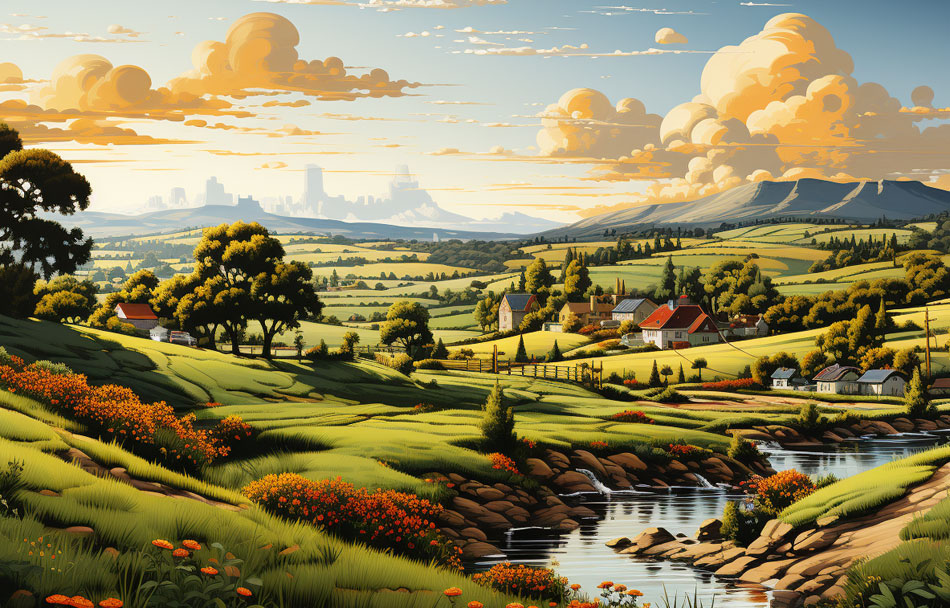 Type IV – Rural Survivors
Type IV – Rural Survivors
The last group, Type IV, was harder to compare, as it consisted of reports describing 27 rural and six urban settings of a primitive, nontechnical or a post-disaster nature. I decided to label them the “survivors.” As in Types II and III, all subjects reported living on Earth. Most gave indications of direct contact with the outside environment but, unlike the Type II New Agers, their surroundings were rural farms or old urban ruins. In contrast to the modernistic Hi-tech reports, Type IV subjects described buildings and transportation settings that appear to be a throwback to around the end of the nineteenth century.
Saving the six urban cases for last, the rural “survivors” reported environments ranging from temperate, green and moist (48 percent), usually with fresh running water nearby, to arid and barren deserts (22 percent) and hilly or snowy mountainous terrain (26 percent). One case was not specific enough to be tabulated. The buildings described were mostly what could be called “traditional,” including eight log cabins, five wood-frame and five stone, clay or brick homes. Two mentioned living in a cave, while one described a white marble kind of complex with red tile roofs. The rest gave less specific terms such as “a farm” or “a primitive kind of place.”
Type IV clothing was equally diverse, with cloth pants, shirts and skirts predominating (45 percent of the rural cases). A significant minority (33 percent), however, did describe themselves wearing long, plain white or ivory-colored robes, not unlike those described by a majority of the New Age subjects. One man said he found himself in the plain saffron robe of a Buddhist monk. The cave dwellers saw themselves in furs and animal skins, and some of the others, notably those in snowy, mountainous areas, also reported coarse, heavy outerwear and flannel clothes as well. Foot gear included shoes or boots (33 percent) and leather or rope sandals (33 percent). The others said they went barefoot.
There seemed to be less variety in the social structures represented among the Type IV rural survivors, with 78 percent eating at home with their families. Another 11 percent, including seven of the nine who wore robes, indicated they took their evening meal in a communal dining room. The rest either gave no response or said they ate alone.
As for food, Type IV was the only group in which meat, fish and game dominated the diets described (46 percent of those answering), along with fruits and vegetables (also 46 percent). Beef, chicken and rabbit were mentioned among the meats consumed. Vegetables eaten included squash, beans and Brussels sprouts. No exotic or artificial foods were described by anyone in this group, urban or rural.
Among the twelve rural survivors who answered the question, nine got their essential supplies from some kind of market or general store. The cave dwellers hunted for their necessities. The one report that came closest to describing a modem life-style mentioned a grocery store. Food was the primary supply item received in 82 percent of these rural cases, with one report of kerosene as well. One person just saw himself piling up boxes on a wagon without looking inside.
Payment for this group was limited to traditional coins (38 percent said gold coins and an equal number mentioned silver or copper ones) and paper money (27 percent). One woman who saw herself dressed as a Native American paid for her supplies with black stones. No Type IV subject mentioned a signature or credit system for obtaining desired goods. Nor did any mention extraterrestrial contacts.
The future life-style envisioned by most of the Type IV rural survivors seemed made up of the basics, with few frills or even modem conveniences. Asked about how they traveled, 52 percent of those who responded mentioned walking or driving a horse and wagon. Only four said they used machines—a jeep, a truck, a scooter and a car. Among the more exotic methods for getting around cited were dog sleds, snowshoes and an ox cart. In like manner, all of the tableware described was either metal or wooden. Only the person who saw a “modern grocery store” mentioned eating with a plastic spoon.
Despite this rather simple way of life, commentaries by Type IV subjects were basically positive, although eleven individuals (40 percent) commented on the seeming isolation of their settlement. Essentially these data sheets present a picture of an uncomplicated but rather lonely lifestyle scattered among small hamlets, religious communities and farms. Typical comments included:
“I walked by the lake [near her town] to die peacefully [at age seventy]. [After death] I viewed the scene. Not many people there. That life was peaceful but lonely.”
Another said:
“The landscape was barren, like the aftermath of a forest fire or a devastated area. . . . A rigorous but pleasant, warm climate. . . . Few people, apparently a lonely life . . . This was in Saskatchewan.”
Of the ten rural survivors who described their feelings when returning home from getting supplies, seven made positive remarks such as “Neat, I liked the place” or “I feel happiness, peace.” Two felt indifference. One remarked, “Ho-hum . . .” Only one of the few cave dwellers indicated dissatisfaction. He felt “unhappiness” in returning to his lonely cave in a world he felt had been destroyed in a nuclear war.
The cave dweller’s despair was an exception. The following comment by a young woman who apparently lived in some kind of isolated spiritual community was more typical of what these Type IV rural data sheets indicated:
“I lived in an adobe building with rough-hewn walls in southern Arizona. We wore long, flowing robes and gold-colored sandals. There was a central market arcade with the houses grouped around it. I felt peace and contentment there. [After death of “old age”] I floated out of my body, feeling fruition and that I knew what it was all about at last.”
Asked where they might have lived this 2100 A.D. lifetime, Type IV subjects indicated locations scattered across North America, Africa and Asia, with one hardy soul ending up in Antarctica. Five mentioned U.S.A. sites, including the Black Hills of South Dakota, Montana, California and Arizona. Four said they were shown central Canada but indicated that its climate was warmer than today. The Russian Steppes, Mongolia and the Himalayas of India and Tibet were mentioned by four others. Africa, Israel and “the east coast of South America” completed the list of Type IV rural settlements.
Two examples of the data sheets describing a future rural Type IV life-style should give readers a good picture of the kind of conditions that were most frequently mentioned by this group. The first is from one of Helen Wambach’s 1983 workshops and the second from a group progression I led in Aix en Provence in the spring of 1986.
“I know this is the future but it’s confusing because so many things looked like straight out of an old Western,” Paula commented at the bottom of her questionnaire. A secretary from the San Francisco area, she had seen herself during her progression to 2100 A.D. as a slender, dark-haired young woman whose face reflected a mix of Caucasian and Native American features. Sometimes barefoot, sometimes wearing soft leather moccasins, she had on a “long, loose-fitting light cotton” dress that appeared to be made of unbleached muslin.
Although she was certain that her village, “more like a small frontier town actually,” was located in Canada, the weather was much warmer than it is there today. The environment was clean and wholesome. A small pond lay in a nearby clearing, surrounded by “a stand of pine trees” that blended into a larger forest. Patches of plowed fields lay between fallow meadows in the opposite direction. There seemed to be some animals grazing out there as well.
This pastoral scene came to her while standing in the garden, about fifty feet away from her home. The house itself was a “good-sized log cabin, built with some kind of mortar in between the tree trunks.” It had a rough wooden porch out in front and two windows with what looked like “old-fashioned glass panes” in them. The roof line was peaked. A big stone chimney took up most of one end of the house.
Moving inside when asked to “go to a time when you are eating your evening meal,” the young woman found herself in a big room that served as kitchen, dining room and living area all at once. A stone hearth dominated one side. Half of it looked like a traditional fireplace, although there was a “metal and glass door.” The other part had a “funny-looking black stove” set into it. This metal stove, which appeared to burn wood and whose exhaust pipe fit into the chimney, also had “an oven on one side” and a flat cooking surface with “three places for pots” or skillets.
The meal itself consisted of “fish and what tastes like potato pancakes.” She shared the rough wooden table with her husband, a “big blond man,” and ten-year-old son. They ate off of “pewter-like plates” and used simple metal utensils—forks, knives and rather large spoons. The meal was “tasty and good” and she noticed that they took time to give thanks to God before eating.
When asked to go for supplies this rural homesteader saw the whole family traveling via horse and wagon to a “general store” where they purchased “sacks of flour, salt and a bright yellow sun bonnet for me.” A small gold coin “with foreign lettering on it” was used to pay for the required supplies. The village’s main street was a “dusty dirt road” lined with “other log buildings” housing various stores and public meeting places. Although primitive, things looked well cared for and the people walking or riding around town seemed “busy and prosperous.” Paula said she felt good about the life she led there and reported being “happy, peaceful” on returning to her log cabin home.
Life on the frontier, even in the future, is hard and often short, however. Somewhere in her late thirties, with her son now a teenager, Paula’s future self was killed in a riding accident: “A horse threw me,” she wrote. The year 2180 A.D. flashed through her mind. Any feelings of regret about leaving her family behind disappeared as soon as her spirit separated from the body. She reported feeling “lightness and peace” while spiraling upward “toward God’s presence” through a light gray mist. Although short, it had been a “full and enriching life, especially in the spiritual sense.”
A somewhat different picture of a relatively isolated rural life in the twenty-second century was reported by a young French housewife living in Aix en Provence. Her bare feet and ankles appeared “dark, long and narrow” sticking out from under a “long pale robe, partly woven from silver thread.” The “tall and gaunt” body was, however, definitely masculine and appeared old, as attested to by gray hair and a “wisp of a white beard.”
“My name is Chalmik,” she wrote, “and I’m something like an astrologer or soothsayer in a small village in Mongolia. My skin, and those of the people around me, is yellow. We live on a high plateau where it’s cold and dry. There’s a continual chilling wind blowing across the steppe, coming down from tall mountains not too far away. It’s mostly flat grassland but dotted with some big trees here and there.”
Asked to describe his home, “Chalmik” said he lived in a “low, spread-out” house made of clay bricks and painted white. It contained “one enormous room” partitioned by a multicolored curtain strung across one corner in front of a sleeping alcove. He shared this space with his wife, a “tall, dark-haired Oriental woman,” four children, ranging from infancy to their early teens, and his elderly mother. A bit later in the progression he noted that his mother’s death, apparently of old age, was “the most emotionally moving” event in that lifetime.
The family ate their evening meal together, sitting on low hassocks around a central platter on which were heaped cooked grains, vegetables and fruits. They used their fingers or short dagger-type knives. Dinner was a “rather noisy affair,” punctuated by slurping some kind of “soup or warm drink” from wooden bowls, the licking of fingers and heated discussions of daily activities. Relations between Chalmik and his oldest son were obviously strained. This added tension to the domestic scene.
Chalmik’s happiest moments came when he could be alone outside surveying the heavens and charting the courses of the stars and planets with the aid of “a surprisingly sophisticated” portable telescope set on a tripod. It was apparently a family heirloom, just as his profession was an inherited calling. Indeed, the quarrel with his teen-aged son concerned the youngster’s “disrespect” for that tradition. The flash of a falling meteorite (or orbiting spaceship?) “in broad daylight” caught his attention one day. Later he noted that seeing bright lights pass overhead was a “fairly common” occurrence. He never saw anything land near the village, however, and reported no extraterrestrial contacts.
Items not grown or made by hand within the village, whose chief occupation seemed to be sheep herding, were obtained at a seasonal outdoor bazaar. It was held just outside a larger town set near the base of the mountains, about a day’s journey away by foot. Chalmik and his two sons traded cured sheepskins for “buttons and metal tools.” He also consulted with his astrologer peers, discussing weather patterns and the meaning of the strange “falling lights” in the sky.
Taken to the last day of that future lifetime, my French subject wrote that one evening when out studying his beloved stars, Chalmik suddenly felt a “sharp, stabbing pain” in his back. Twisting around, he realized that he had been knifed by his disgruntled son. As he fell to the ground his last thought was “how ungrateful, I’m leaving him everything.” Then his spirit left the body, rising upward toward the heavens. The year 2197 flashed into his mind as the date of death.
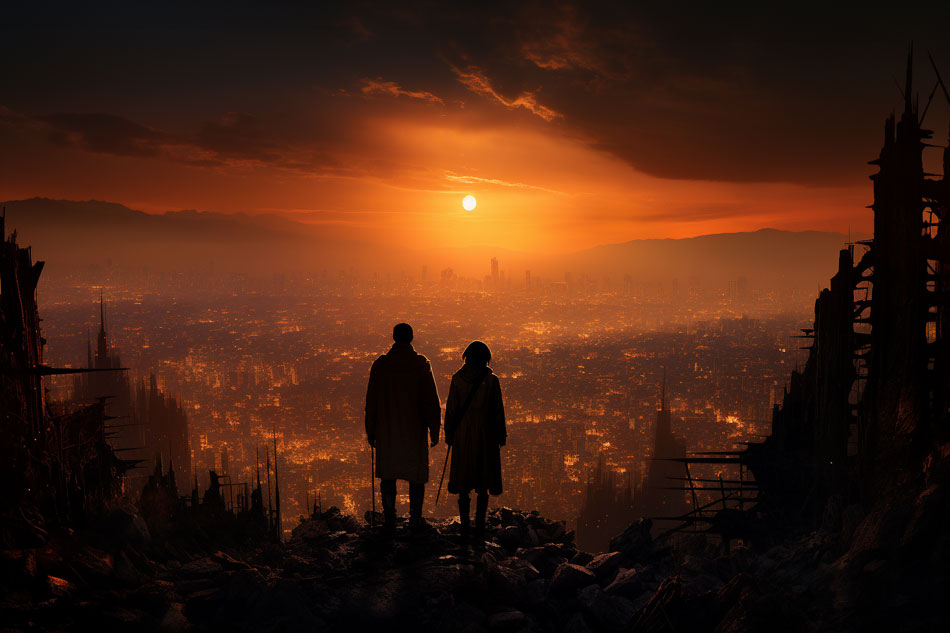 Urban Rubble Pickers
Urban Rubble Pickers
The fourteen workshop participants whose 2100 A.D. stories fit a rural survival pattern were grouped together with six urban future-life reports that also exhibited survival-level life-styles, seemingly a generation or two after some catastrophe had ruined their once-prosperous cities. These six Type IV urban survivors said that their future lives will occur in what had been Moscow (two reports), Cairo (two reports), Manhattan and Los Angeles. These were by far the most unappealing accounts given by workshop participants who progressed into the 2100 A.D. period, with the possible exception of the post-nuclear “cave dweller” mentioned above. I nicknamed them the “urban rubble pickers” based on their environmental and life-style descriptions of survival in what they saw as the ruins of a former civilization.
In all six cases the climate and physical environments experienced were stark and desolate. The first Moscow survivor, a woman from one of Helen Wambach’s workshops, provided the most complete report. Apparently a female soldier wearing a green uniform with numbers on the chest, she described that city’s environment as “foggy, gray, flat, wet . . . nearly lifeless.” The other Moscow case, from a young Frenchman, said the ground looked “irradiated, dry and stony.” The air smelled stale and was hard to breathe. He was living in what he perceived to be underground storm sewers.
An American portrayed the Manhattan of 2090 A.D. as having “no plant life. . . . The tops of the buildings were damaged and there were piles of rubble, stones and pebbles underfoot.” The two reports from Cairo both cited the overwhelming dryness of the desert atmosphere, with hot, biting, sand-laden winds. One lived in a communal settlement in the desert. The other said there were “very few survivors; it seemed to be after a cataclysm.”
In retrospect the report of a San Francisco man who felt he was living among the ruins of Los Angeles was perhaps the most optimistic of the six. This California disaster survivor said:
“I see islands, perhaps what’s left of California. The weather is strange, with fog and clouds and lots of purple in the sky. There are many overgrown ruins on the other islands.”
Life in these six devastated areas was hardly pleasant either. The New York City post-holocaust survivor saw himself:
“Walking down the street entirely alone . . . dinner is some type of red meat with a bone and I eat in a dark basement-type place with a man who has a cap on and red mottled marks on his face. . . . I also have red mottled marks all over my hands. . . . The entire experience left me feeling depressed. I really don’t want to come back anyway, much less to a war-destroyed place like that.”
In the hovels of what she described as Moscow, the woman soldier in the green uniform reported:
“The marketplace is a set of ramshackle buildings with many people; many are sick and all are dressed shabbily but me. I wear a coarse green uniform-style shirt and jacket and long skirt. It has numbers on the chest. The buildings are brick, square, red and white with three stories. They seem very small, with sloping roofs. I die at twenty-eight, shot by my husband. My feeling on leaving the body is one of acceptance.”
The other Moscow survivor also found himself in the military. He described his experience in these terms:
“I had a strong, heavyset man’s body dressed in a dark green military uniform, topped with a black commando-style cap. I was wearing tall black boots. My skin was white. The air stank and was heavy; it was hot and dry. We were underground in what looked like a drainage sewer. There were mostly men around. I think we were searching the area. My throat felt like it was on fire. It was horrible.”
This young man, who was in one of my 1987 workshops, popped back into full waking consciousness in the middle of the session, choking and coughing. Such reactions are highly unusual because all workshop participants are given suggestions that they will experience their past or future lifetimes only as if dreaming and not as current reality. As soon as he became fully awake and back in the present, of course, his throat pain ceased and he was able to relax. He later told me that his parched throat and an overwhelming desire for a drink of cool water had interrupted the experience.
The two Cairo survivors, from two different 1987 workshops, gave less detailed descriptions of their post-disaster conditions. One, a young Frenchwoman, merely described the desolate and parched environment, remarking that there seemed to be “very few people alive.” The other, a man from Atlanta, stated that he was executed with a knife for some unnamed “crime against the community,” possibly looting. He gave his age at death as just eighteen years old.
The fur-covered cave dweller, one of the rural Type IV survivors mentioned earlier, also noted that he died an early death, which he set at 2080 A.D. He identified his location only as “somewhere in the U.S.A.” At the end of his data sheet he commented:
“I was unhappy in this life. I died a nuclear death and felt happy leaving the body.”
Although several of the Type IV reports leave one with an uneasy feeling that these subjects were viewing the aftermath of some ancient catastrophe that crippled their ancestors’ civilizations, I feel it is important to note that this last case was the only death directly attributed to the effects of a nuclear war among all of the 2100 A.D. reports collected in the two groups of future-lives workshops. In a way this “negative fact” of just one radiation death reported, combined with the relative scarcity of reports of large-scale physical devastation (only 6 out of 133 cases, or 4.5 percent) provides hope with regard to the likelihood of a future global nuclear holocaust. Apparently, if these reports are even partly valid, natural disasters and our inability to curb the human race’s ongoing pollution of the environment will cause greater harm for future generations than any atomic blasts.
Excerpt from Mass Dreams Of The Future
See Part I here.
To continue further reading, see full pdf book download here.
Posted in Other Topicswith comments disabled.


